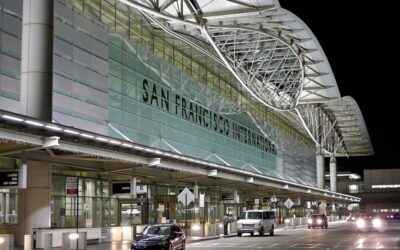The Airline industry is one of the most impacted industries due to the global pandemic. More than 90% of all aircraft in the world are now parked on aprons and runways. Airports are shut or have greatly downsized operations, mainly for evacuation or cargo flights.
DIGITAL CREED asked aviation expert Manoj Srivastava, Director – Aviation Technology, Lorhan IT about the future of the airline industry, and how airlines and airports are coping with the situation.

Read his complete profile here: https://www.linkedin.com/in/manoj1712/
Manoj Srivastava is an accomplished, Senior Airline Technology executive with more than 22 years of demonstrated achievements in Airlines / Airport / OTA / eCommerce domain. He is responsible for managing IT Infrastructure, cloudification, digital transformation, CRM, ERP, system migration (legacy to new generation web application), and mobile apps customer experience.
Excerpts from the email interview follow.
DC: What is the business model that the airlines can adopt after the lockdown is lifted?
Manoj: The Airline industry is highly regulated; airlines follows rules and regulations laid out by the DGCA (Director General of Civil Aviation). So as per current guidelines, all domestic and international flight operations are suspended till 30th May 2020, which may be further extended subject to COVID scale and government instructions, even post lockdown situation.
As far as the business model is concerned, I would say airline businesses only survive and grow when the Aircraft flies, and the aircraft only flies when customers are available for travel. Whenever a crisis of this type happened in the past, the aviation industry was impacted first and revived last. COVID may go in the next couple of weeks, but fear of COVID will take few years to overcome, or until everyone is vaccinated. So passengers will fly only if it is essential and in an emergency, for business or personal reasons. However, there us a way to change the business model (and survive). For example, SpiceJet is doing more cargo flights now.
DC: When do you see flights being partially restored in India? What are your reasons for this estimation?
Manoj: Post the lockdown, once the government permits, most of the Indian carriers may start operating limited domestic flights, especially to metro and business cities: Delhi, Mumbai, Kolkata, Chennai, Bangalore, Pune, Hyderabad. For obvious reasons, it would be mostly government officials, bureaucrats, party leaders, and entrepreneurs who will travel between these cities.
DC: What can airline cabin crew and ground staff do now, in self-isolation?
Manoj: In the current situation, most airline staff are asked to go on unpaid leave. Some cabin crew and ground staff are utilized for managing passenger excavation flights, carrying medical equipment, and to facilitate special flights for movement of doctors or paramedical staff. Other staff may be required to work from home and airport locations for functions such as flight dispatcher, AME, etc. Approximately 10 – 15% staff may be utilized for doing such medical operations, however, they have to follow standard safety procedures such as wearing PPE or face mask and gloves, using hand sanitizers while doing flights, etc.
DC: Do you see airlines going bankrupt and closing down? Or will they be saved by governments? (Capital infusion to keep the airline afloat).
Manoj: A couple of foreign airlines (Air Mauritius, Virgin Australia) have already filed for voluntary administration and some may file for bankruptcy. I won’t be surprised if an Indian carrier files for bankruptcy, though I feel, it will opt for a merger/acquisition instead. The Airlines are an important and essential part of the transportation industry. In order to save the airline industry, the government should take necessary decisions and should announce a bailout package to individual airlines — or to the hospitality industry in general. FICCI has already sought a bailout package for the domestic aviation industry, including direct cash support from government and interest free or soft-loans for two years.
DC: How do you do social distancing during flights? What are the precautions that cabin crew can take?
Manoj: Our government takes social distancing very seriously and enforced a lockdown across the country without a second thought. That is why we are able to control the spread of the Coronavirus better, in comparison to other countries. The government authorities have already prepared guidelines that are circulated to airlines, airports and the associated service industry. Airlines and airports follow government instructions in regard to maintaining social distancing – installing sanitizer machines across the airports, sanitizing passenger trolleys after every use, installing a thermal machine to check the temperature; cabin crew, ground staff wear PPE kits while serving customers; free face mask and gloves may be distributed along with boarding-passes; the middle-seat is to be kept vacant in order to maintain social distancing; cabin crew will take extra precautions while dealing with travellers and observe passenger behaviour. They will ask passengers and cabin crew to wear masks and gloves; and they will serve a sanitised towel and do fuming in the cabin while flying.
DC: What are the precautions to be taken at airports? How will security personal do scanning and body frisking if they are to observe social distancing?
Manoj: Airports have already prepared a blueprint for passenger traffic, with steps like parking towards PTB, SHA; they have prescribed protection measures for the boarding gate connecting to the aerobridge. To maintain social distancing, airports have identified and marked all the connecting touch-points, and the traveller may require to follow those spots for a specific purpose. As I mentioned earlier, sanitizer vending machines may be installed across the airport building; baggage wrapping may be mandatory for check-in baggage; a special medical unit will be available to do spot testing for suspected travellers.
Technically, there are many applications, equipment, devices and connectivity available to manage self-check-in. Auto-frisking and self-boarding using AI/ML, RPA technology are all available, and Indian airports may be ready to adopt such technology, albeit in a phased manner. Airports running under Public-Private-Partnership (PPP) plan may implement that technology subject to government approvals.
The views and opinions expressed by the interviewee in this article are personal. DIGITAL CREED does not endorse, nor has it verified the claims expressed by the interviewee, and will not be held responsible for remarks made by the interviewee.









